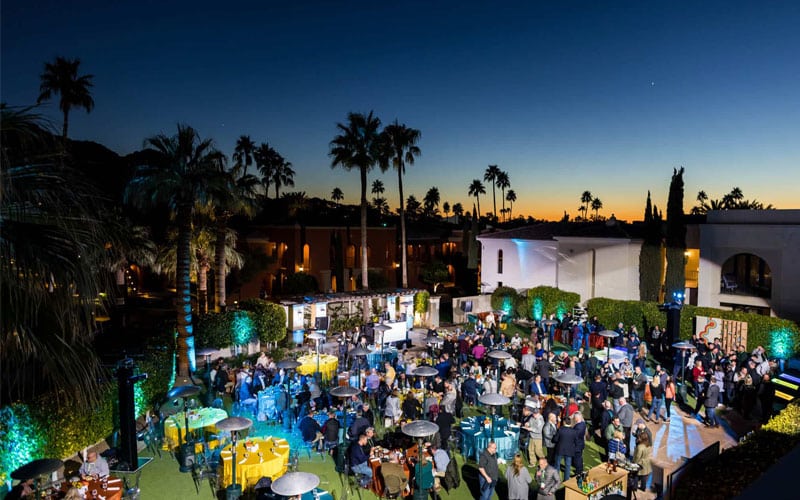As the use of drones continues to grow in popularity, more and more videographers are incorporating them into their workflow. Capturing drone footage at corporate events can add a unique and dynamic perspective, providing viewers with an immersive and exciting experience. From aerial shots of the venue to sweeping panoramas of the surrounding area, drone footage can help to tell the story of the event in a visually stunning way. However, capturing drone footage at corporate events requires careful planning and execution to ensure that it is done safely and legally. In this article, we will explore the benefits and challenges of capturing drone footage at corporate events and provide some tips and best practices for doing so effectively. Let’s start with the benefits.
Benefits – One of the primary benefits of capturing drone footage at corporate events is that it can provide a unique and visually stunning perspective. Aerial shots of the venue, surrounding area, and event activities can help to tell the story of the event in a way that is both immersive and exciting. In addition, drone footage can add production value to corporate event videos, making them stand out from other types of event content.

Best Practices – Using a drone at a corporate event requires some forethought to ensure that it is done safely and effectively. To help you get the most out of your shoot, we’ve created a checklist covering the main points to consider.
- Plan Ahead: Before the event, conduct a site survey to identify any potential hazards or flight restrictions. This will ensure that you can fly your drone safely and within the regulations of the Federal Aviation Administration (FAA). Additionally, consider the lighting conditions at the event, the location of the subject matter, and the type of footage you want to capture, so you can include it in your shot list.
- Check the Weather: Some things just can’t be controlled. The weather is an obvious one. BUT…you can look at the weather forecast a few days out to see if there are any windy or rainy conditions, that would spoil our footage. If there are, then you can look for an opportunity to go shoot at least SOME footage of the venue before the event. This way you’ll at least have something from the aerial perspective to include in the final video.
- Use a Stabilized Camera: Using a stabilized camera is essential when shooting drone footage of an event. A stabilized camera helps to minimize camera shake and ensures that the footage captured is smooth, clear, and professional-looking. Without stabilization, footage can appear shaky and amateurish, detracting from the overall quality of the video. A gimbal is a great way to stabilize your camera when shooting drone footage. A gimbal uses a series of motors and sensors to keep the camera level and stable, even as the drone moves through the air. This allows for fluid movement and a professional-quality finished product.
- Practice Flying Beforehand: Flying a drone takes practice. Before the event, spend time practicing flying your drone in a safe and open area.
This will allow you to get comfortable with the controls and ensure that you can fly your drone with precision and confidence. As well as allowing you to check how the footage is coming out.
- Use a Second Operator: If possible, consider using a second operator to help control the drone while you focus on capturing footage. This can help ensure that you capture the shots you need while maintaining control and safety.
- Follow FAA Regulations: The FAA has strict regulations for drone operation, including altitude limits, flight restrictions, and more. So it is always best to follow these regulations to ensure that you are operating your drone safely and legally.
- Vary Your Shots: Varying your shots is a fundamental aspect of shooting footage from a drone for these corporate events. The unique perspective that a drone provides allows for a wide range of possibilities when it comes to capturing shots. To keep the footage engaging and interesting, it’s important to vary your shots by changing angles, heights, and movements. Capturing footage from different heights can help to provide context and give viewers a sense of the scale of the event. Using a variety of angles can also add depth and interest to the video, while capturing movement can help to create a dynamic and visually engaging final video.
- Edit Your Footage: Post-production on your drone footage can elevate the quality of the final video and make it stand out. This includes color correction, cropping, adding music or sound effects, and editing together the final piece. Color correction is especially important for drone footage, as the camera can sometimes struggle to capture colors accurately due to lighting conditions or other factors. Adjusting color levels during post-production can create a more cohesive and polished look for the final segment. Additionally, cropping footage can help to create a more focused and visually appealing video, while music or sound effects will add depth and emotion to the video.

 This will allow you to get comfortable with the controls and ensure that you can fly your drone with precision and confidence. As well as allowing you to check how the footage is coming out.
This will allow you to get comfortable with the controls and ensure that you can fly your drone with precision and confidence. As well as allowing you to check how the footage is coming out.




